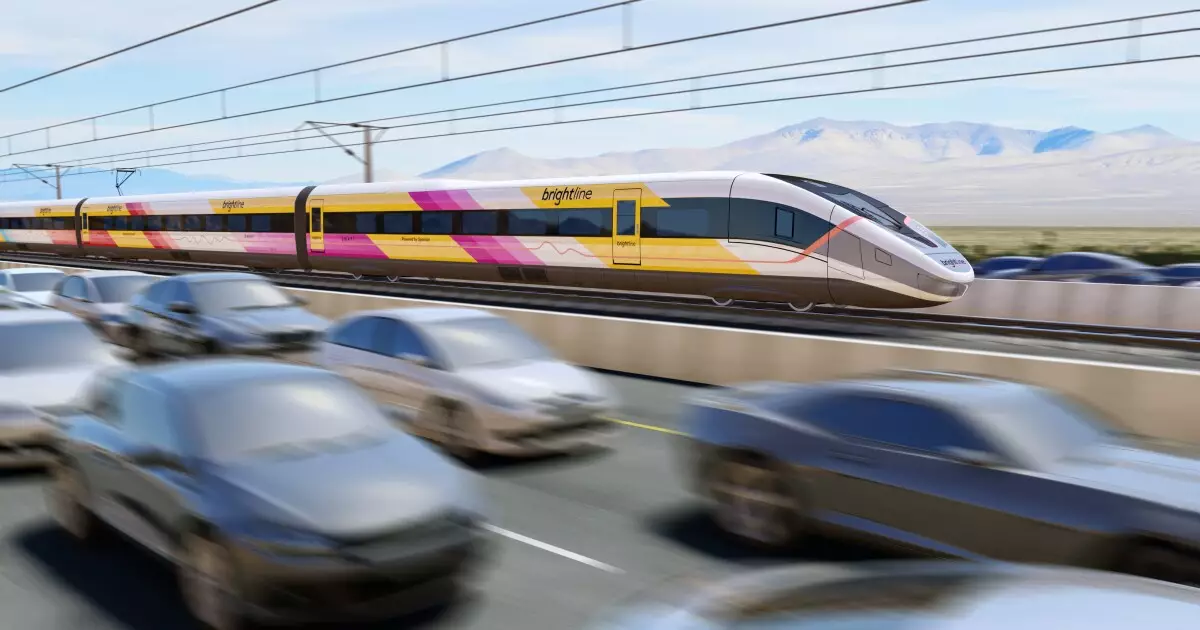Brightline West: Pioneering High-Speed Rail in a Changing Transport Landscape

Brightline West, a groundbreaking initiative aiming to establish a high-speed electric train route between Las Vegas and Southern California, symbolizes a significant advance in modern transportation solutions. With an ambitious price tag of $12.4 billion, the project is gaining momentum through the planned issuance of $2.5 billion in unrated private activity bonds (PABs). This infusion of capital will serve dual purposes: refinancing existing debt and providing the much-needed funding for construction activities.
This project isn’t merely a local endeavor; it epitomizes a transformative vision. The high-speed connection is designed to reduce travel time dramatically—turning a typical six-hour drive into a mere two-hour train journey, appealing to both leisure travelers and business commuters alike. As we delve deeper, the project’s implications extend far beyond just transportation efficiency.
The upcoming issuance of unrated PABs will likely set a precedent, marking it as one of the largest deals within the municipal market this year. The financial strategy entails not just the immediate refinancing of existing bonds but also a secondary layer of securing a $6 billion bank facility within a 180-day timeframe post-deal—a formidable challenge that could complicate the financing landscape should the company fall short.
Such intricate financial frameworks indicate the high-stakes nature of this project. If the requisite additional funding isn’t procured, the bondholder’s interests are safeguarded through a mandatory redemption clause. This provision underscores the project’s risk profile, especially considering that it is dependent on securing supplementary investment commitments.
The planned additional issuance of $1.5 billion PABs exemplifies the need for diversified funding avenues essential for maintaining financial viability in large infrastructure projects. With the involvement of a prestigious underwriting team led by Morgan Stanley and supported by other financial institutions, including trusted legal counsel from Orrick, Herrington & Sutcliffe LLP, Brightline West aims to exude confidence in its financial planning while navigating the complicated economic waters.
DesertXpress Enterprises, operating under the moniker Brightline West and backed by Fortress Investment, aims to operate America’s first privately owned, fully electric high-speed train. The route spans 218 miles, primarily paralleling the I-15 freeway, leveraging advanced train technology capable of reaching speeds exceeding 186 mph. This innovation is not merely about speed; it represents a shift toward sustainable transportation modes in an era increasingly concerned with environmental impact.
The project’s timeline sets an operational target of December 2028, following the onset of construction anticipated for early this year. Brightline’s previous success with its Florida counterpart adds credence to its ambitions, but similar to any high-profile transport project, the successful execution of milestones remains contingent on effective project management and stakeholder coordination.
The Broader Context of High-Speed Rail Development
Endorsed by the Biden administration, which has aimed to cultivate a national high-speed rail network, Brightline West represents a focal point for bipartisan support in a typically contentious arena of public transport development. However, it juxtaposes sharply against the backdrop of California’s troubled publicly funded rail initiatives, which have faced accusations of delays and budget overruns.
Such contrasting approaches raise critical discussions about the merits of public versus private financing in infrastructure. Advocates for Brightline West tout its capacity to harness private investment, potentially leading to faster execution and completion compared to government-led projects. As discussions surrounding the efficiency and sustainability of high-speed rail heat up, Brightline’s success or failure could provide valuable case studies for future projects across the United States.
Anticipating Future Developments
In the wake of these developments, the potential for Brightline West to generate an estimated 8.6 million riders and achieve revenue projections of $1.4 billion by 2031 underscores its anticipated impact on regional economies and travel habits. The project’s implications extend beyond mere transportation, hinting at broader economic stimulative effects and a reconfiguration of commuter dynamics in the landscape of rapid urbanization.
The evolution of Brightline West may well serve as a crucible for how the U.S. approaches high-speed rail in the years to come, potentially influencing legislative frameworks and financing mechanisms for future infrastructure undertakings. In essence, the project is not only about connecting cities; it represents an unprecedented opportunity to redefine mobility and stimulate economic growth through innovative transportation solutions.





